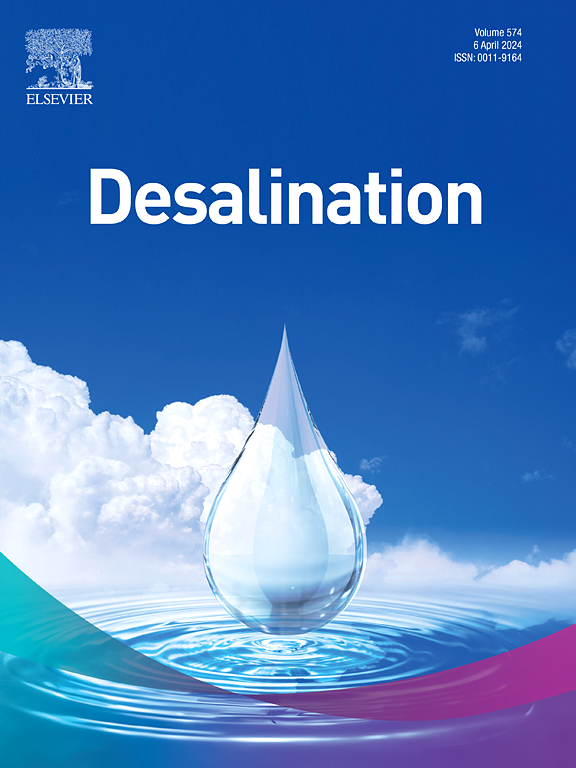水稳定壳聚糖/鞣花酸/铜金属有机骨架材料对铀的高选择性吸附研究
IF 8.3
1区 工程技术
Q1 ENGINEERING, CHEMICAL
引用次数: 0
摘要
为缓解陆地铀资源短缺和铀矿冶炼对环境的污染,合成了壳聚糖/鞣花酸/铜金属有机骨架(MOF)材料,用于海水铀提取。实验结果表明,酚醛盐配体MOF材料CEM对铀的吸附选择性优于鞣花酸/Cu-MOF材料(EM)。CEM对铀的分配系数是EM的16.4倍,其在水中的稳定性明显超过EM。在308 K时,CEM对铀的吸附量达到796 mg/g,即使经过7次吸附-解吸循环,其吸附率仍保持在93%以上。CEM对铀的吸附涉及与表面氨基、羟基和羧基的自发吸热反应。综上所述,CEM作为一种从海水中提取铀的有效方法具有广阔的应用前景。本文章由计算机程序翻译,如有差异,请以英文原文为准。
Investigation into highly selective uranium adsorption using a water-stable chitosan/ellagic acid/Cu-metal–organic framework material
To mitigate the shortage of land uranium (U) resources and environmental pollution caused by uranium mining and smelting, a chitosan/ellagic acid/Cu-metal–organic framework (MOF) material (CEM) was synthesized for U extraction from seawater. CEM, a phenolic salt ligand MOF material, exhibited superior adsorption selectivity for uranium compared to an ellagic acid/Cu-MOF material (EM) according to the experimental results. The Kd (distribution coefficient) of CEM for uranium was 16.4 times higher than that of EM, and its stability in water significantly exceeded that of EM. At 308 K, the U adsorption capacity of CEM reached 796 mg/g, maintaining a high rate above 93% even after 7 adsorption–desorption cycles. The uranium adsorption of CEM involves a spontaneous endothermic reaction with amino, hydroxyl, and carboxyl groups on the surface. In conclusion, CEM exhibits promising potential as an effective method for extracting U from seawater.
求助全文
通过发布文献求助,成功后即可免费获取论文全文。
去求助
来源期刊

Desalination
工程技术-工程:化工
CiteScore
14.60
自引率
20.20%
发文量
619
审稿时长
41 days
期刊介绍:
Desalination is a scholarly journal that focuses on the field of desalination materials, processes, and associated technologies. It encompasses a wide range of disciplines and aims to publish exceptional papers in this area.
The journal invites submissions that explicitly revolve around water desalting and its applications to various sources such as seawater, groundwater, and wastewater. It particularly encourages research on diverse desalination methods including thermal, membrane, sorption, and hybrid processes.
By providing a platform for innovative studies, Desalination aims to advance the understanding and development of desalination technologies, promoting sustainable solutions for water scarcity challenges.
 求助内容:
求助内容: 应助结果提醒方式:
应助结果提醒方式:


